In Photos: Elusive Mountain Lions Come Out of Hiding
Any other name
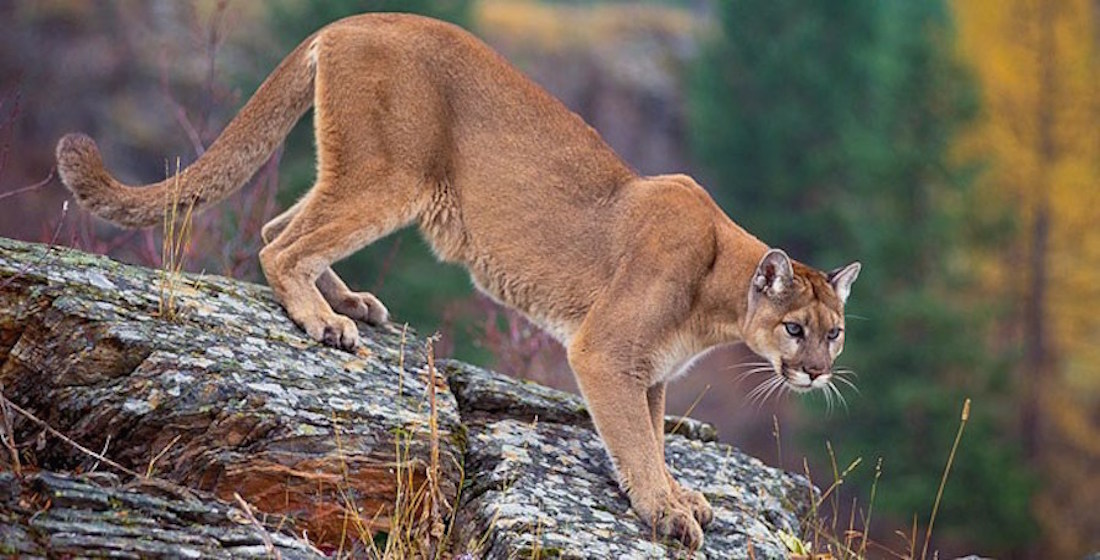
There is no animal across the Americas that has been given more names than the hemisphere's dominant hunting cat often known as the mountain lion, Puma concolor — which translates to "lion of one color," referring to the adult mountain lion's beautiful tan-colored coat. Regardless of their regional names, these magnificent predators are the second largest member of the cat family in the Americas (jaguar takes the top slot) and the fourth largest cat found in the world.
Tough critters
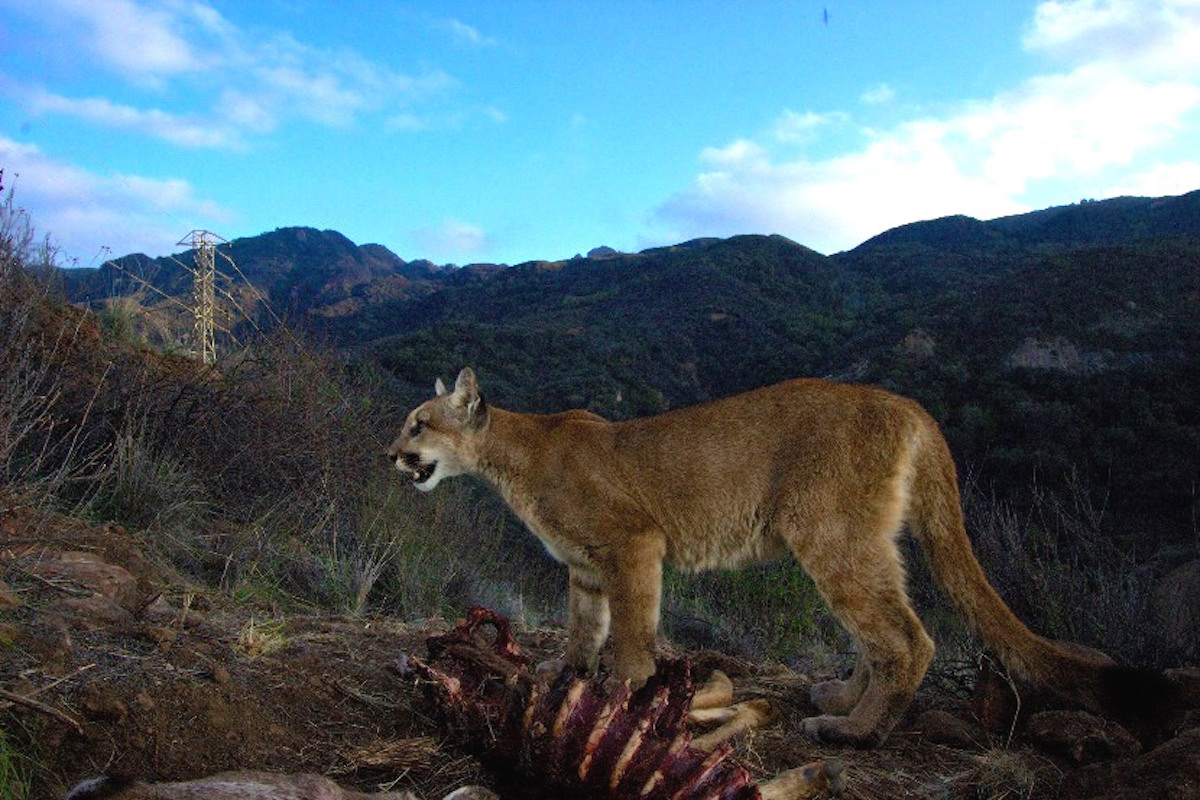
These large American cats once had a home range spanning over 110 degrees in latitude, thriving from the far northern Canadian Rockies to the Straits of Magellan and from the Atlantic Ocean to the Pacific Ocean. Only man has ever had as wide a distribution. The native people of both North and South America had their special name for the cats found in their cultural area, and the many European explorers added to the names used for these graceful cats. Etymologists contend that the mountain lion has more than 16 different names among the native people of South America, 25 names among the native people of North America and some 40 different English names. If you look up the name "mountain lion" in a current dictionary, you will find a listing of more names for this creature than any other animal in the world.
Long heritage
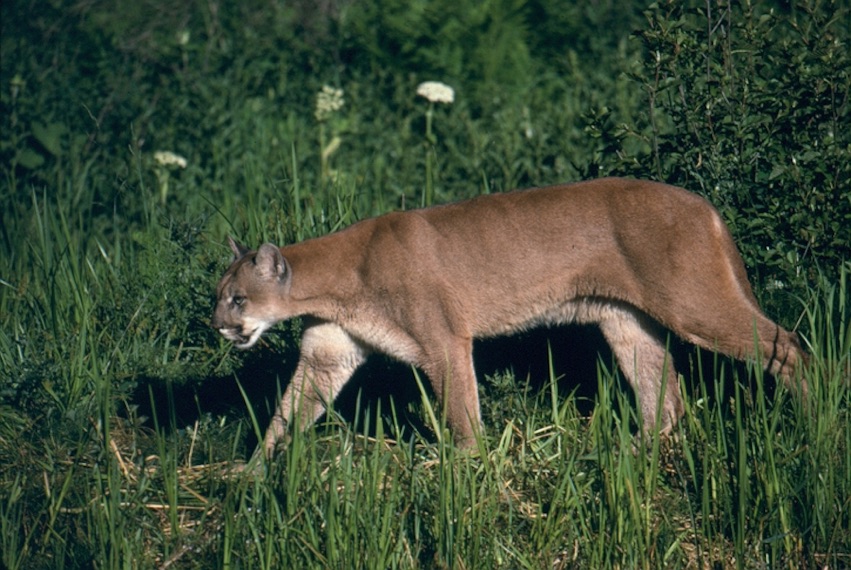
Whether called a mountain lion or a catamount, puma, panther, cougar, painter, gato monte or el leon, this indigenous American cat has ancestors that crossed over the Bering Land Bridge from Asia during the Illinoian glacial stage some 191,000 to 130,000 years ago and has always been one of the America's apex predators.
Beautiful and unique
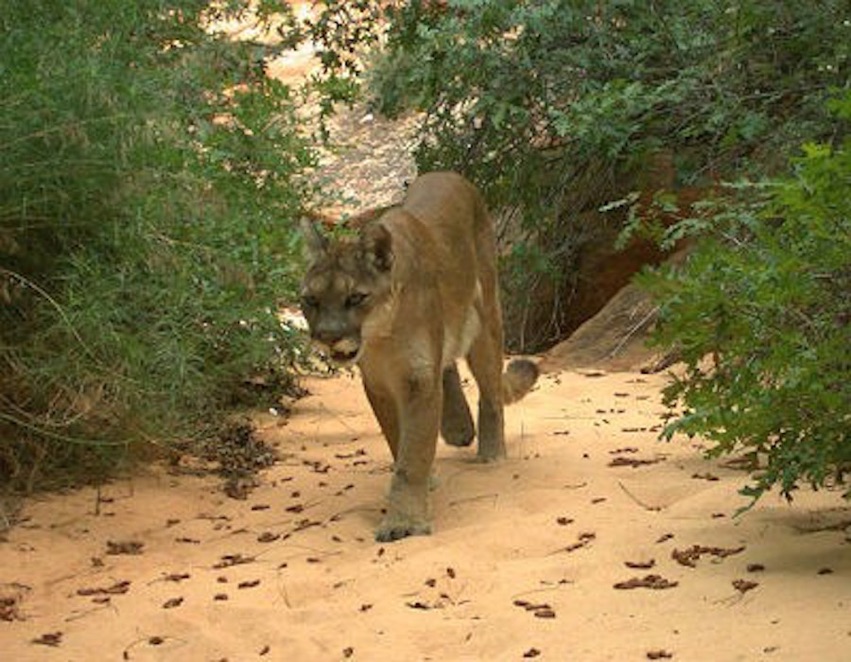
Male mountain lions can grow to be 8 feet (2.4 m) long from nose to the tip of their tail and weigh upwards of 220 pounds (100 kilograms). Females only grow upwards to 7 feet (2.1 m) in length and 140 pounds (64 kg) would be considered a large female cat. A beautiful tawny-beige fur covers the cats' bodies, except for the belly and chest, which is a grayish-white. The tips of the tail, ears and around the snout are highlighted with black fur. Mountain lions are unique to the large cat family in that they cannot roar, but they can make a series of shrieks, growls, hisses and even will purr like the domestic house cat.
Big foot
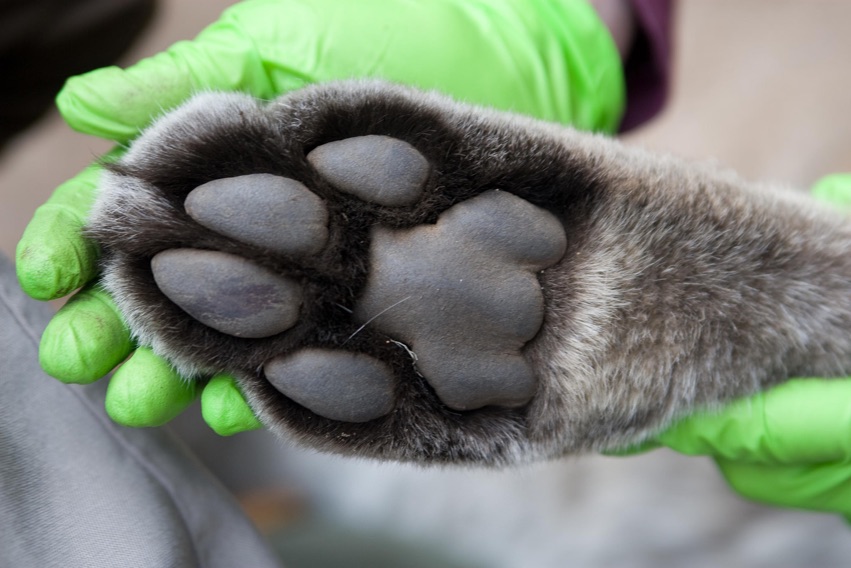
Mountain lions have a distinctive M-shaped foot pad with three lobes on the rear heel pad. When walking, their claw marks do not show up as part of their track marks. Since their toes slant, like the human foot does, they too have definite left and right feet. When walking, their back feet step into the track of their front feet creating an overlapping pattern of tracks.
Solitary creatures
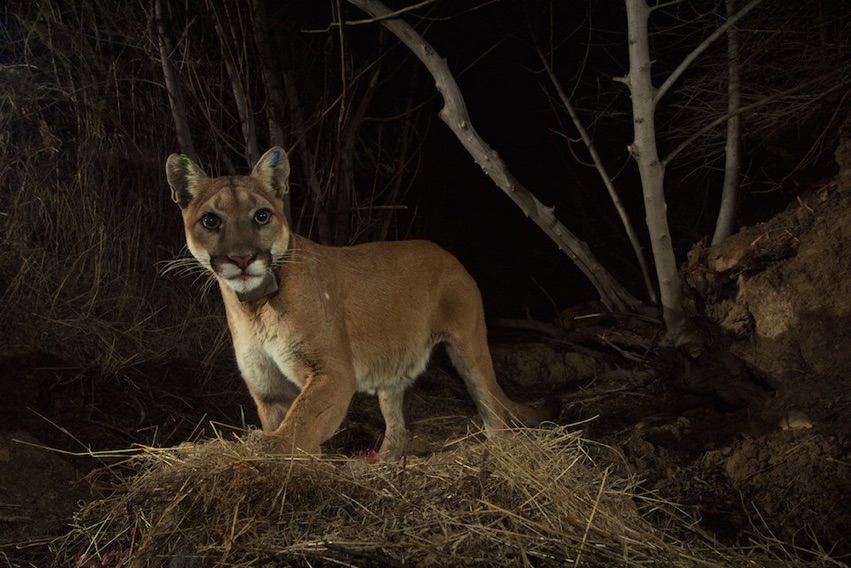
Biologists have long thought that male and female mountain lions tend to live a solitary lifestyle, except during mating season. Both sexes are extremely territorial, marking their territories with pheromones, feces and claw marks. An adult male mountain lion's territory is usually more than 100 square miles (2,592 square kilometers) in size, while a female's territory is smaller, ranging from 20 to 60 square miles (52 to 1,552 square km). Mountain lions can move through their territories at speeds approaching 10 mph (30.6 km/h).
Quick on their feet
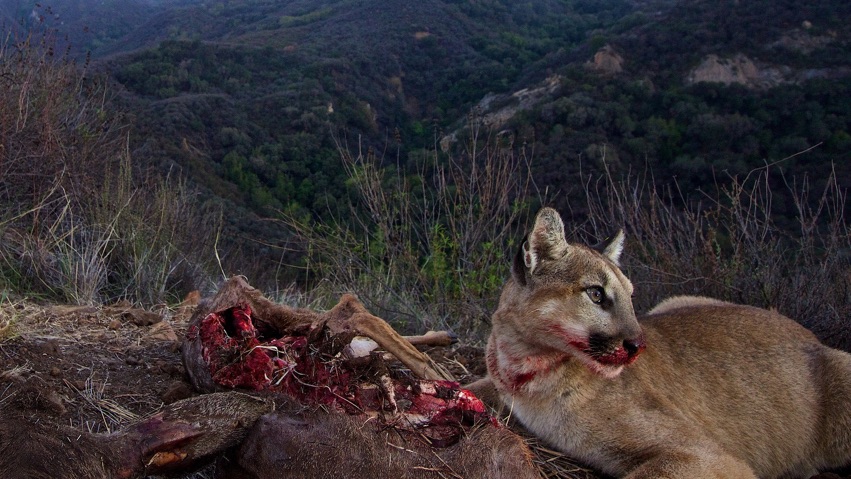
Deer are the mountain lion's prime prey animal. Wherever deer are found, there is a good chance that mountain lions are nearby. Mountain lions thrive best in regions of steep, rocky canyons and/or mountainous terrain, but they can adapt to make their homes everywhere from arid deserts to coastal forests. They can live at elevations from sea level to 10,000 feet (3,048 meters). Their powerful legs can propel them as high as 15 feet (4.5 m) into the air, allow them to leap forward some 40 feet (12 m) and burst into a short hunting sprint at a speed nearly 50 mph (80 km/h).
Sign up for the Live Science daily newsletter now
Get the world’s most fascinating discoveries delivered straight to your inbox.
Meat eaters
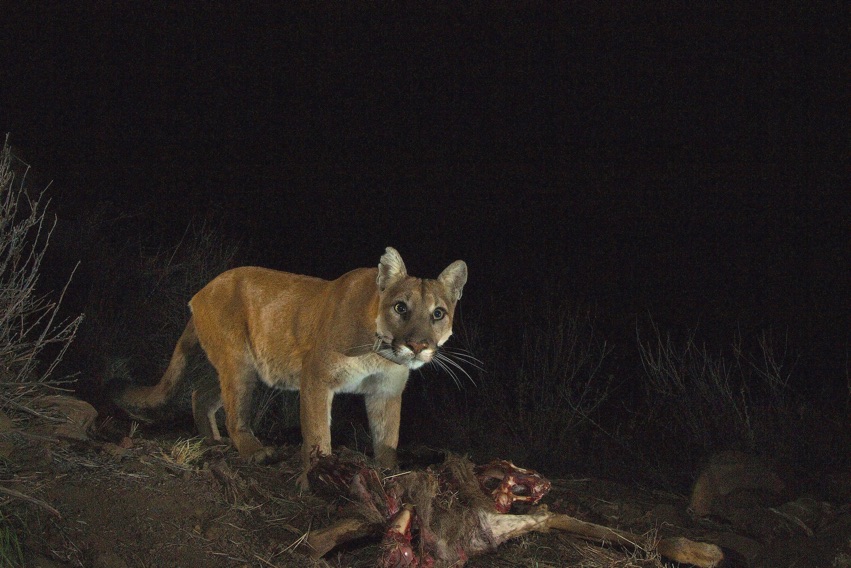
Mountain lions are carnivores and often travel great distances in search of food. In addition to deer, mountain lions will eat a variety of other mammals, including raccoons, mice, squirrels, rabbits, porcupines, beavers and coyotes. They will eat just about any mammal that crosses their path. They nearly always stalk their prey and attack from behind. They attempt to break the neck of their prey by biting the victim at the base of the skull. After the kill, the mountain lion will often bury the prey, returning to feed upon it when hungry.
Cutie-patooties
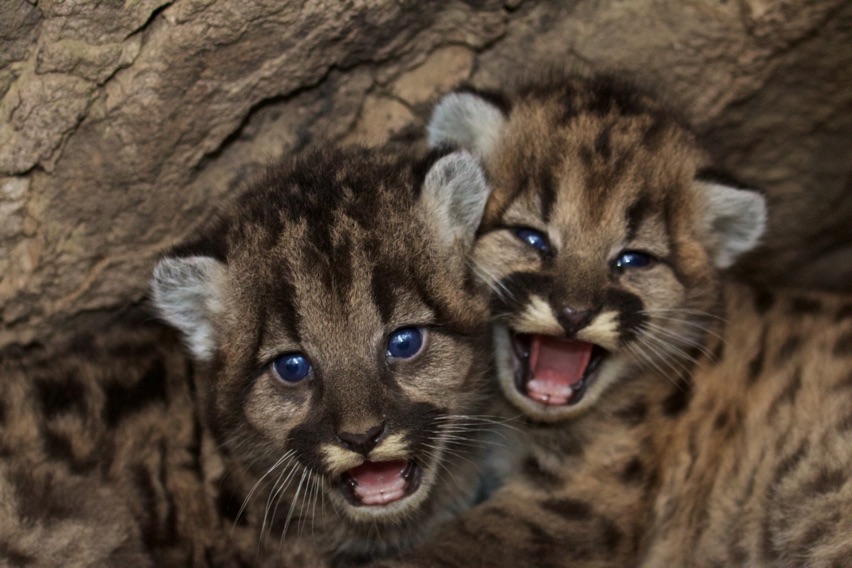
Mountain lion breeding season is commonly December to March, but these large cats can and do breed any time of year. Gestation usually lasts from 82 to 96 days. The mother cats generally give birth to two kittens, but female lions have been known to have litters ranging in number from one to six.
The young normally stay with their mother for about 14 months, but can stay for upwards of 26 months. Female mountain lions raise the young alone, as the male takes no parenting role and could kill the young kittens in order to encourage the female to mate again. The fur of the young is spotted to aide in camouflaging. The spots fade as the young mountain lions mature.
Too comfy
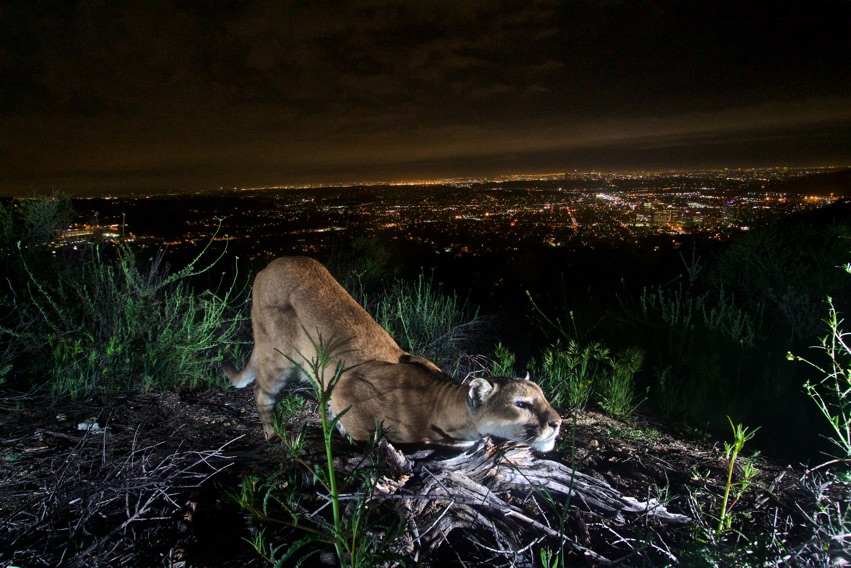
Urban mountain lions have become more common around the cities of the American West. Some biologists suggest that females bring their kittens closer to the cities to escape potential danger from male lions. Others suggest that as the deer population became more urban, the mountain lions simply followed the deer. Living near humans has many hazards for the female lions and her kittens, as the large cats are never welcome into a neighborhood of human children, livestock and pets.
Losing home
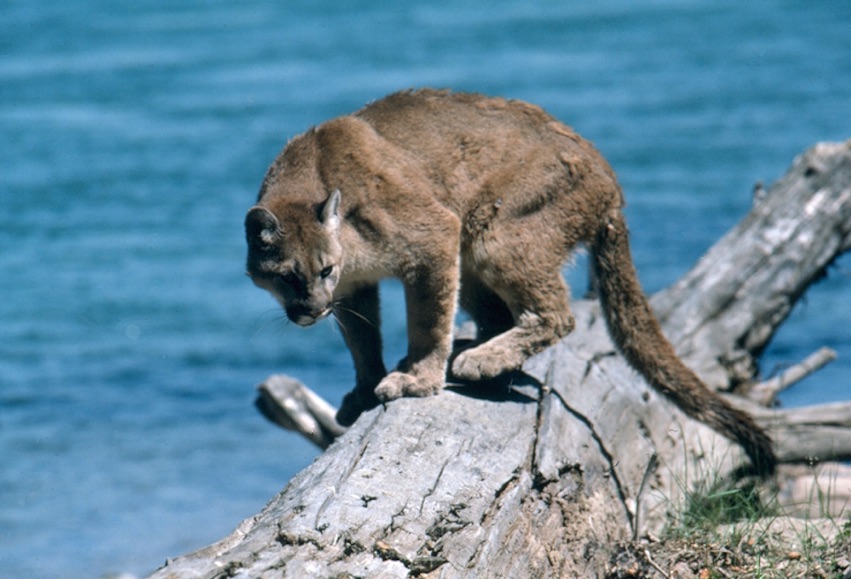
Mountain lions were once hunted to extinction along the east coast of the United States, except in Florida; and all mountain lions seem to have a natural avoidance of human contact. Since these large cats have a most elusive nature, biologists have had a tough time counting them or even studying them. Unwelcome by humans and extensive loss of habitat makes living in the wilds of North America challenging for these large predators. Biologists suggest that a free-roaming mountain lion in the wild will live only 10 years, while those in captivity can live nearly 20 years. Best estimates today suggest that there are some 30,000 mountain lions across North America, mostly living in the rugged regions of the American West. The natural habitats of these mountain lions are under extreme pressure from human development.










